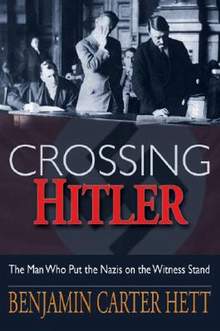Podcast: Play in new window | Download
Host Updates:
- Michael Ratner – A Black Family In the White House That Slaves Built
Related News Stories:
- Bush’s Last 100 Days: The Ones To Watch
- Rahm Emanuel: Wikipedia Entry
- The End of International Law?
- Thousands of Indian Farmers Commit Suicide After Using GM Crops
- President-Elect Obama: First Press Conference
- President-Elect Obama: 100 days to Demonstrate Commitment to Human Rights
—
Stephen Kinzer: The Reality of War in Afghanistan
In his recent article The Reality of War in Afghanistan, author and veteran New York Times correspondent Stephen Kinzer describes how the current war strategy in Afghanistan is not really based in reality. Kinzer points to how history has shown that victory over the Taliban is near impossible and adds that peace through skillful negotiation among Taliban clan leaders could be the best approach instead of deploying more soldiers. He adds that Afghanistan civilians are collateral damage amid US bombings, helping to recruit new Taliban soldiers.
Stephen Kinzer:
“There is still an overwhelming feeling in the U.S. that we still need to take revenge for the crimes on September 11 and who are we going to take revenge against? Well, its the Taliban and Al-Quaeda is the answer that the people in Washington would give you. The Taliban and Al-Quaeda are very different forces. To negotiate with Al-Quada is morally repugnant but the Taliban is something different. They have a broad base inside Afghanistan.”
- Its not a surrender, its a cold calculated way to achieve an end outside of the military means.
- We need to put aside our emotions and look at this real politique.
- The war in Afghanistan is antiseptic – to compromise with a force that was our enemy is unpopular.
- The poppy crop in Afghanistan is almost the source of all the world’s heroin.
- To wipe out the poppy crop is not achievable.
- You can’t continue to spray and burn the crop and hope that’s going to end the problem.
“The yearly value of the Afghan poppy crop is about 4 billion dollars.” Kinzer’s idea is to not wipe it all out and impoverish Afghanistan communities. Instead, he says that NATO should purchase crop. “Because when people buy heroin on the street that money goes right to the coffers of terrorists to buy weapons. Kinzer says cut them all off, turn a portion into morphine and destroy the rest.”
Guest – Stephen Kinzer, a veteran New York Times correspondent who has reported from more than fifty countries on five continents. He was the New York Times bureau chief in Istanbul. Stephen currently teaches journalism and United States foreign policy at Northwestern University.
——
Crossing Hitler: The Man Who Put the Nazis on the Witness Stand
Author Benjamin Hett outlines the fascinating and tragic story of a young lawyer Hans Litten in his recent book Crossing Hitler: The Man Who Put the Nazis on the Witness Stand. Before the Nazis rose to power in the early 1930s, they incited calculated violence among the working class in German taverns. Four Nazi stormtroopers were charged with firing randomly into a dance hall where a communist hiking club were holding a party. Three young men were wounded. Hans Litton was the advocate for the 3 men.
Hans Litten called Hitler to the witness stand to show that the Nazi party was a violent party, and by cross examining Hitler he tried to prove that. Litten forced Hitler to contradict himself, reducing him to humiliating rage that revealed his true intention. At that time, Hitler wanted to be a legal party in Germany and of course you couldn’t be a party that was extra-constitutional and legal but at the same time he didn’t want to disappoint the base of his party which was this violent working class aspect. Two years later, the Nazi Party rose to power.
What came after the Reichstag Fire was the arrest of about 5 thousand people across Germany who the Nazis have identified as opponents or potential opponents. Hans Litten was among them and sent to a concentration camp. Author Benjamin Hett describes a powerful narrative of Hans facing torture yet still telling stories and teaching art to other prisoners.
Hans Litten was born in 1903 in Halle in Central Germany, his father was a law professor and Jewish but converted to German evangelical (Lutheran).
Guest – Benjamin Hett, author of Crossing Hitler: The Man Who Put the Nazis on the Witness Stand. He’s a former trial lawyer, and now Associate Professor of History at Hunter College.
——————————————————————————————–


